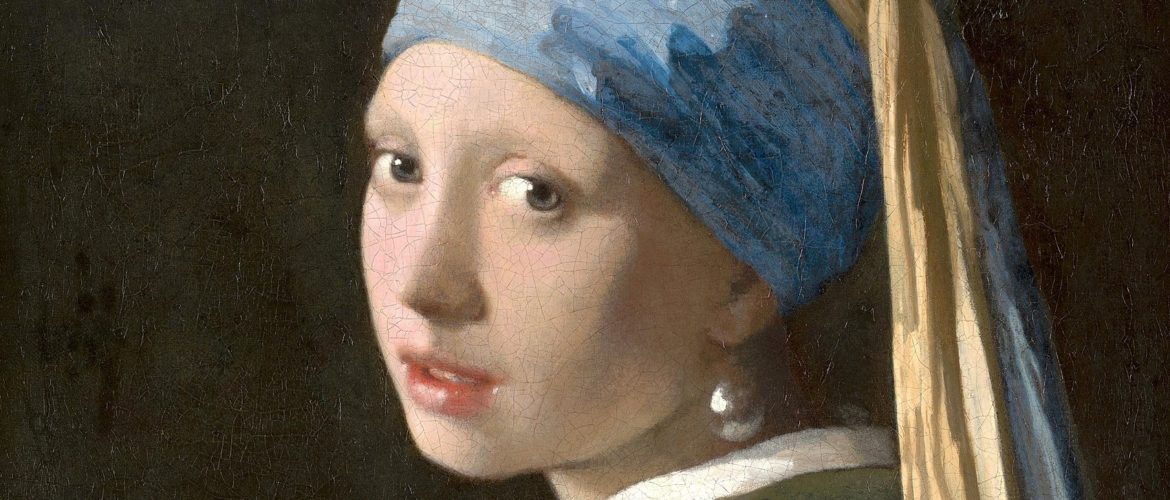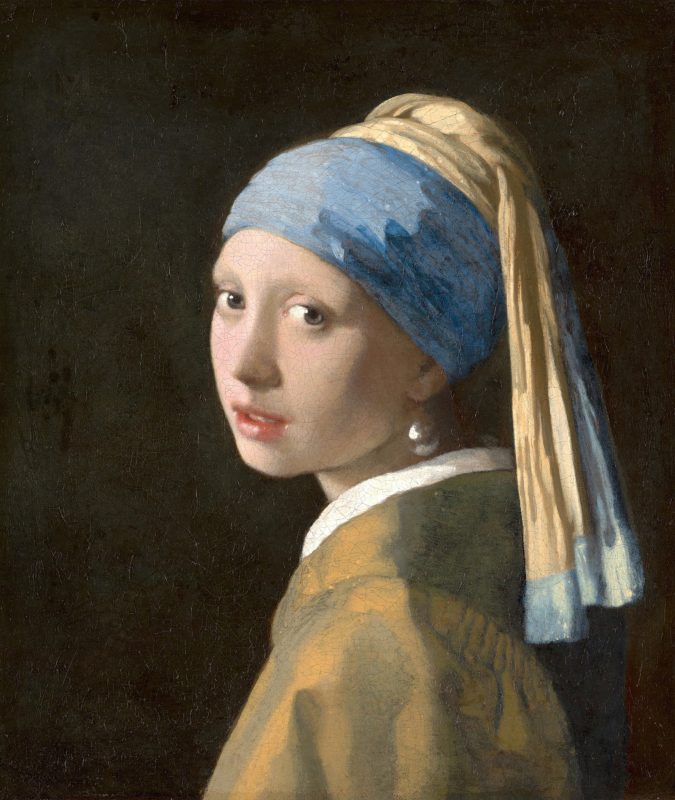Vermeer’s Technical Mastery in the Girl with a Pearl Earring Painting

Johannes Vermeer’s Girl with a Pearl Earring painting, created around 1665, is globally recognized as the “Mona Lisa of the North.” This artwork is a captivating portrait of a woman with a magnetizing gaze, filled with an ethereal glow due to Vermeer’s skilled color palette selection and use of light in his painting compositions. At present, the masterpiece is held at the Mauritshuis Museum in The Hague. Here is a closer glimpse of Vermeer’s painting techniques evident in this work, which sheds light on his ability to achieve such stunning effects of radiance.
Vermeer’s Use of Light, Shadow, and Color
Johannes Vermeer was a virtuoso of optical effects. His skilled use of light and shadow creates an enchanting effect, with all surviving artworks by Vermeer creating a magnetizing effect on their viewers. Talking about Girl with a Pearl Earring, one should note the dramatic chiaroscuro effect of the diffused light source from the left, which creates an impression of the woman’s face emerging from the dark background. Due to this creative technique, Vermeer managed to highlight the translucency of the young woman’s light skin together with the reflective pearl shades.
Technical Painting Aspects
The secret to the stunning effects of Vermeer’s works lies in the artist’s meticulous canvas preparation. Historians note that Vermeer created a yellowish-white to light gray ground layer, mixed with chalk for pigment stability. After that, he sketched the painting with black lines, which ultimately guided the final composition. The artist started with the background, adding the young woman’s face afterward, and finishing the composition with the painting’s focal point – the pearl.
Recent Scientific Discoveries about the Girl with a Pearl Earring Painting
Though the Girl with a Pearl Earring painting is more than 350 years old, scientific advancements of recent times have enabled the scholarly community to uncover the hidden nuances of this artwork. Extensive analytical work was done by the conservation team headed by Abbie Vandivere, with MA-XRF, X-ray powder diffraction, and multispectral optical coherence tomography, among other advanced methods applied to explore the thickness of layers, identify any hidden layers, map the distribution of chemical elements, etc.
The analysis revealed underdrawings made with broad brushstrokes and helped identify the sourcing of pigments in Vermeer’s paints, from the Afghan-origin ultramarine to Mexican cochineal. The scholarly community also managed to decipher the intricate process of the painting’s adjustments, such as changing the ear’s position and neckline redrawing during the painting’s creation.

